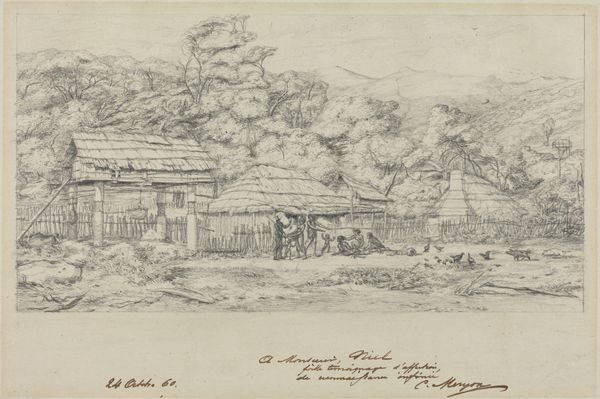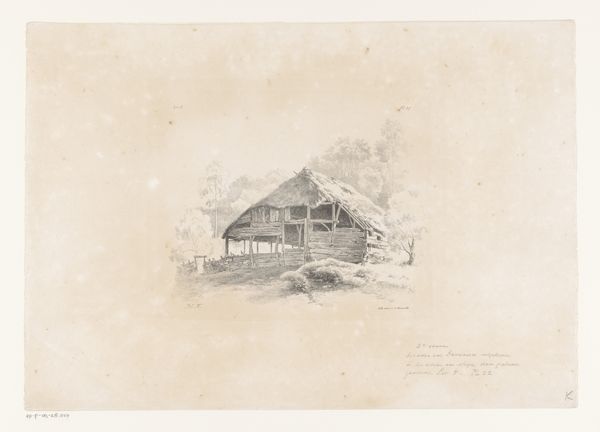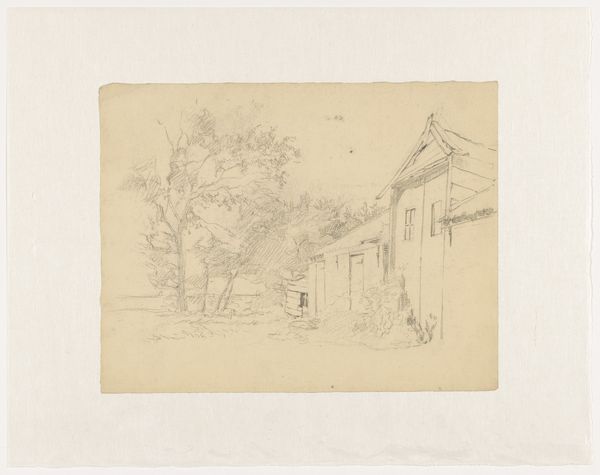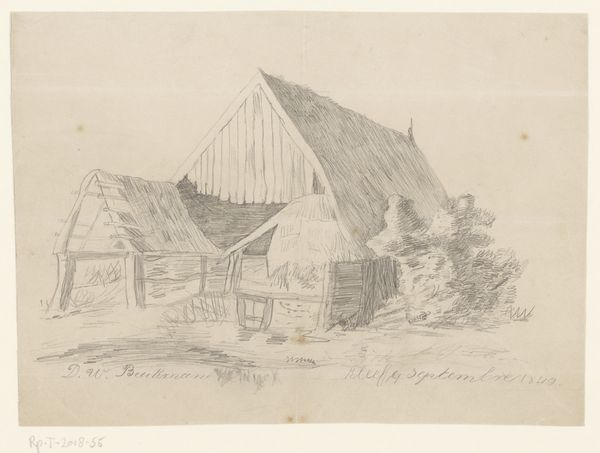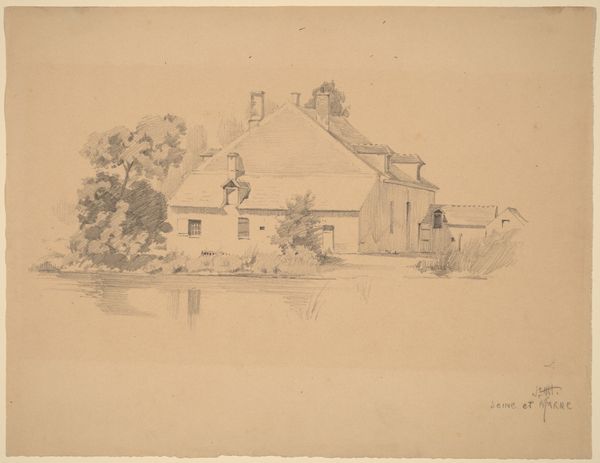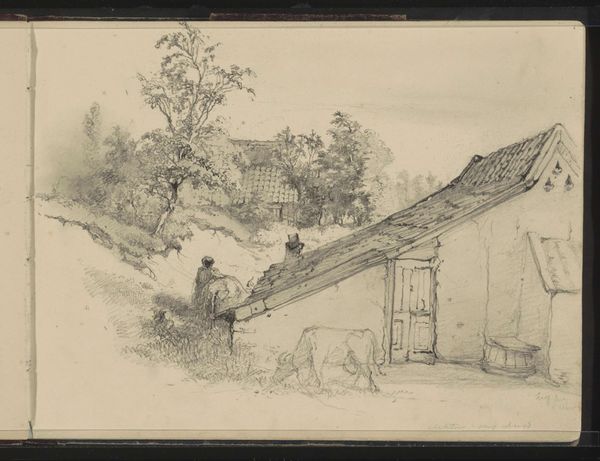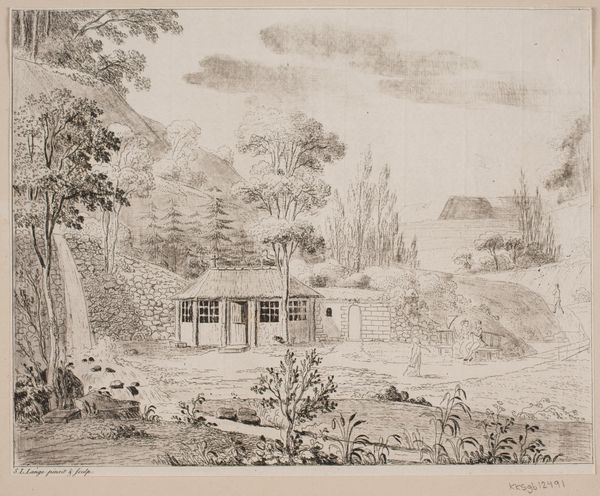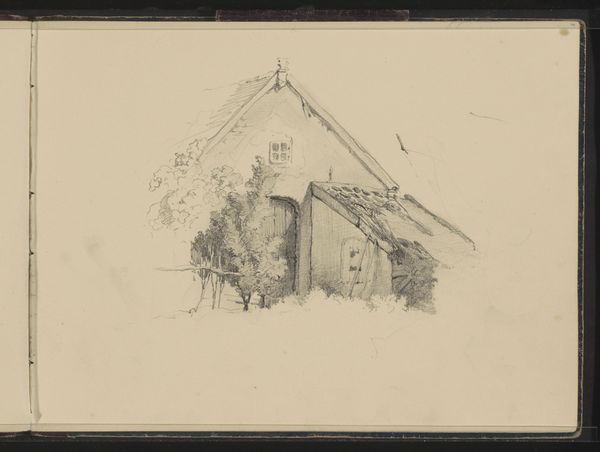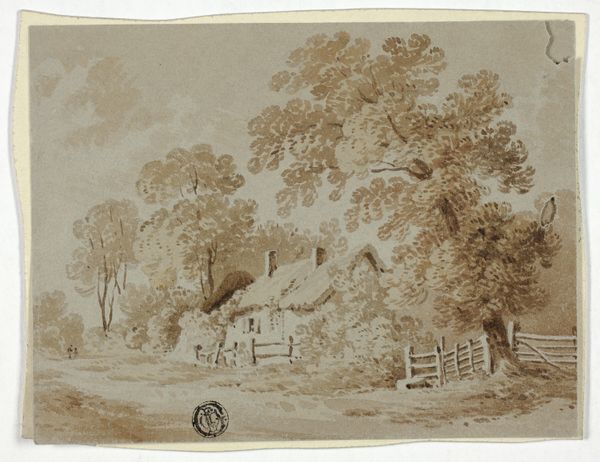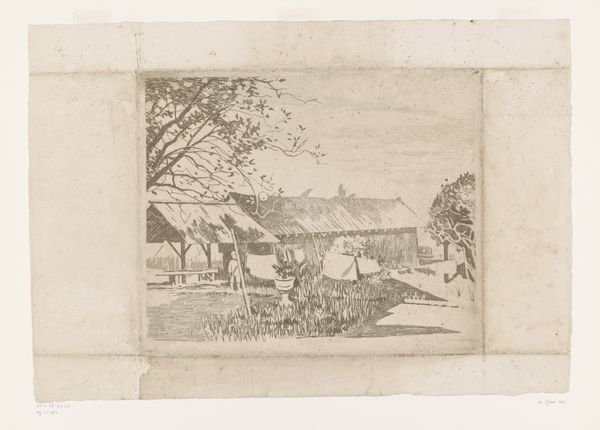
painting, paper, watercolor
#
painting
#
landscape
#
paper
#
watercolor
#
coloured pencil
#
genre-painting
#
realism
Dimensions: height 220 mm, width 282 mm
Copyright: Rijks Museum: Open Domain
Editor: Here we have Cornelis Johannes de Vogel's "Gezicht op een boerderij," or "View of a Farmhouse," created sometime between 1834 and 1879. It’s a watercolor and colored pencil drawing on paper. I find its restrained palette and simple composition rather charming. What do you see in this piece, looking at it from a formalist perspective? Curator: It is intriguing how de Vogel utilizes a limited range of hues. Observe how the muted earth tones dominate, creating a sense of tranquility. The formal relationships established through line and shape articulate a rudimentary, almost archetypal, farmhouse. Consider the triangulation formed by the rooflines – a conscious ordering of space? Editor: That's interesting, I hadn't considered the importance of the roof lines. It makes it feel quite stable. But it's so unassuming, doesn't the simplicity risk being bland? Curator: The simplicity is deliberate. De Vogel isn’t striving for virtuosity. Rather, it’s about the careful modulation of tones. See how the artist’s gentle strokes differentiate between planes, using gradations to indicate depth and shadow? How would you describe the overall pictorial space? Editor: It feels compressed, almost flattened, which reinforces that idea of simplicity. The drawing guides you right to the farmhouse and doesn’t ask much of you after that. Curator: Precisely. The drawing's power resides not in elaborate detailing but in the synthesis of forms and values to elicit an understated beauty. Consider this simplicity in the context of Realism. Where would you place this study on a scale between representation and subjective expression? Editor: Definitely closer to representation, although the hazy rendering has an expressive quality, especially around the trees. This perspective really makes me appreciate the intention behind such subtle formal decisions. Curator: Indeed. Reflecting on our exchange, I am reminded of how a close study of seemingly straightforward works can yield nuanced understandings of artistic intention and historical context.
Comments
No comments
Be the first to comment and join the conversation on the ultimate creative platform.

